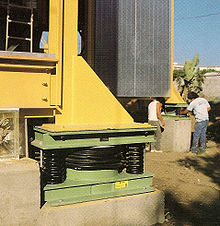1. Seismic activity in India
2. The risk of earthquakes in India
3. The safety measures in India to protect against earthquakes
4. The potential consequences of an earthquake in India
5. Advice on how to stay safe during an earthquake
India is located in one of the earthquake-prone regions of the world, holding a unique tectonic position between the Eurasian and Indian Plates. Nearly all parts of India have experienced seismic activity on some level in history, with particularly high levels occurring in certain areas along the Himalayan Frontal Fault. The most devastating earthquakes to have impacted India were in Assam and Bihar (1950), Bhutan (2009), Ladakh (2010) and Sikkim (2011), all resulting in considerable loss of life as well as incalculable damage to vital infrastructure and other property.
 |
| Earthquake Zones Of India |
Recent coordination among various governmental departments, NGOs and other responsible organisations has helped to strengthen disaster mitigation efforts in order to reduce potential impacts from possible future events. This includes improved early warning systems, public information campaigns raising awareness about preparing for natural disasters, and greater emphasis placed on retrofitting critical structures.
The risk of earthquakes in India
India is a seismically active region with a risk of destructive earthquakes, particularly in the western and northeastern parts of the country. Major earthquakes have struck India for centuries - most recently, the devastating 2001 Gujarat earthquake which killed over 20,000 people - and there remains a significant level of risk.
While building codes are now enforced more effectively than in past decades to improve resistance to seismic activity, regional infrastructure challenges limit the effectiveness of such measures. It is important for earthquake risks to be addressed domestically through risk assessments and improved disaster preparedness plans at both state and local levels that include not just governmental responses plans but also community support strategies.
Earthquakes in India can cause significant destruction of life and property due to relatively high levels of urbanization and population density. It is therefore important that safety measures are taken to protect against such disasters. These include ensuring adequate building codes, designing buildings that comply with seismic standards, strengthening existing buildings against seismic forces, retrofitting areas prone to seismic activity, efficient disaster management systems and emergency preparedness plans, building earthquake-resistant structures such as self-centering structure frames, which can reduce the intensity of damage caused by gravitational forces during an earthquake.
Additionally, regular drills should be conducted so that people know how to act in case of an emergency during an earthquake. It is also necessary to have early warning systems installed to minimize loss of life in a quake situation. Therefore, there must be comprehensive proactive approaches towards preventing damage from earthquakes in India through effective implementation of these safety measures.
 |
| Earthquake Resisting Structures |
The potential consequences of an earthquake in India
The potential consequences of an earthquake in India can be devastating both economically and socially. A major earthquake could cause irreversible damage to homes, businesses and infrastructure, leading to displacement and destruction on a massive scale. It could also trigger landslides and tsunamis, resulting in the loss of lives, livelihoods, and property worth billions of dollars. Many people would be put under immense strain as they deal with shortage of food and water supplies, medicine and services like electricity or gas lines that may be damaged or cut off due to extensive earthquakes.
Besides the physical losses suffered, there is also psychological trauma associated with earthquakes. People may suffer from post-traumatic stress disorder (PTSD) after experiencing not only property damage but other social disruptions such as school closures and restrictions on travel for several weeks or even months due to continuing seismic activity. As such, preparing for the potential consequences of an earthquake before it strikes is vitally important for India.
Advice on how to stay safe during an earthquake
In order to stay safe during an earthquake, it is important to be prepared ahead of time. Familiarize yourself with the emergency plans in your area, ensure that you have access to supplies such as food and water, and build or practice a safe space in the home or workplace.
Additionally, when an earthquake occurs, remember to drop down onto your hands and knees and cover your head and neck with one arm; if you're indoors, move away from windows and objects that could fall; if outdoors, stay in the open away from power lines or buildings. When the ground stops shaking, take inventory of injuries (to yourself and/or others) and damage before evacuating or taking any other actions. Finally, make sure you keep listening to local news reports for additional safety instructions until the all-clear is announced by officials.
